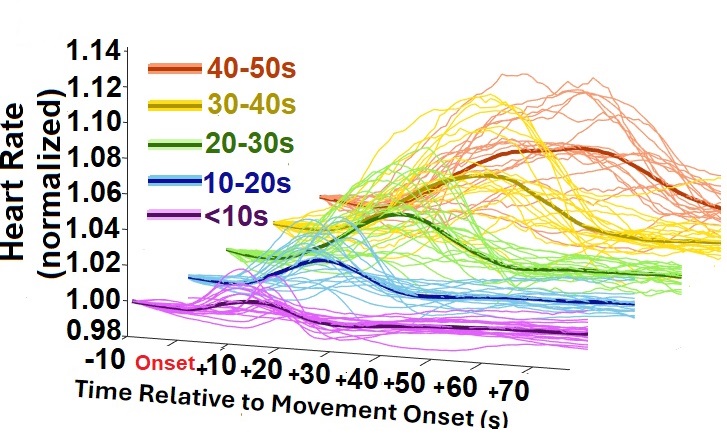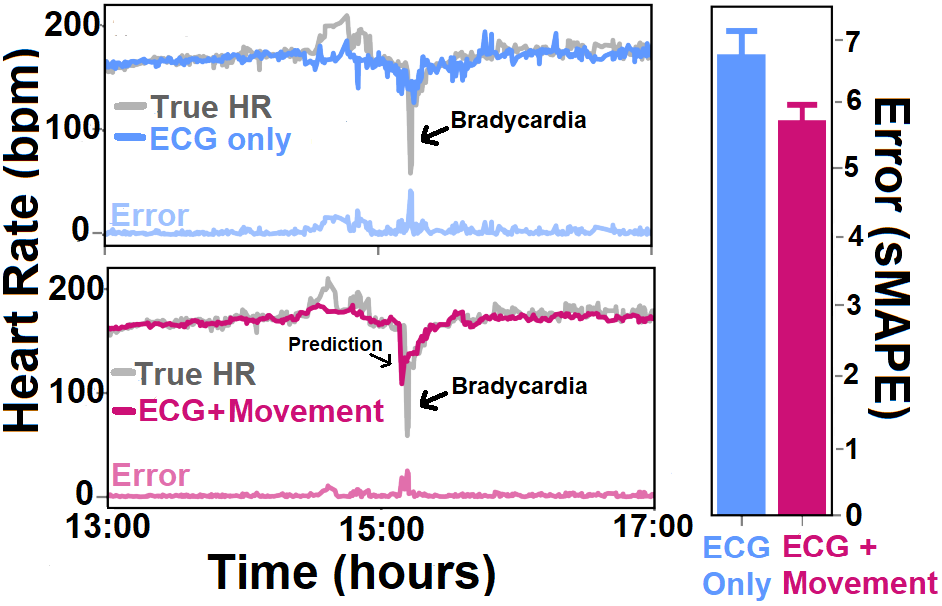Neonatal General 11
Session: Neonatal General 11
419 - Quantifying Movement-Cardiorespiratory Interactions to Predict Adverse Events in Preterm Infants
Monday, April 28, 2025
7:00am - 9:15am HST
Publication Number: 419.6193
Leonora Blodgett, Northeastern University, Boston, MA, United States; Ally Richardson, University of Texas at Austin Dell Medical School, Austin, TX, United States; Kinga Jenei, University of Texas at Austin Dell Medical School, Austin, TX, United States; William Gilpin, University of Texas at Austin, Austin, TX, United States; Alan Groves, University of Texas at Austin Dell Medical School, Austin, TX, United States; David Paydarfar, University of Texas at Austin Dell Medical School, Austin, TX, United States; Dagmar Sternad, Northeastern University, Boston, MA, United States
.jpg)
Leonora Blodgett (she/her/hers)
PhD Student in Electrical and Computer Engineering
Northeastern University
Boston, Massachusetts, United States
Presenting Author(s)
Background: Nearly 10% of all infants in the United States are born preterm, which is defined as live birth < 37 weeks’ gestational age (GA). Preterm infants commonly face life-threatening cardiorespiratory events, including apnea of prematurity, bradycardia, and hypoxia (ABH). These events can put preterm infants at increased risk for developing long-term neurological or motor impairments, and in extreme cases, may result in death.
Objective: Our research objective is to investigate the relationship between motor activity and cardiorespiratory function in premature infants and to improve prediction of ABH events.
Design/Methods: Physiological signals were collected from 50 subjects born < 31 weeks GA over their 8-week stay in the Neonatal Intensive Care Unit (NICU). Subjects were selected based on having no severe health complications (sepsis, intraventricular hemorrhage, conditions requiring surgery, etc.) during their stay in the NICU. The signals collected included ECG, oxygen saturation (SpO2), and photoplethysmography (PPG). Movements bouts were identified via a wavelet-based algorithm that extracted the time intervals of motion artifacts in the routinely measured PPG signal. Average heart rate across subjects was measured as a function of movement duration and postmenstrual age (PMA). The frequency of movements was also assessed relative to hypoxic episodes. Forecasting models were trained on movement features and ECG data to identify whether movement enhances prediction of ABH events.
Results: (1) Movement activity decreased during and after hypoxic episodes. (2) Increases in movement duration were closely mirrored by an increase in heart rate. However, for severely preterm infants ( < 28 weeks PMA), there was a stunted heart rate response to movement. (3) The addition of movement features as input to a forecasting model improved prediction accuracy of ABH events and extended prediction time by 40s when compared to a forecasting model trained only on ECG data.
Conclusion(s): (1) Episodes of hypoxia may trigger a suppression of movement activity. (2) As the healthy preterm infant matures, it develops a more appropriate and robust cardiac response to movement. (3) Our research suggests that movement can serve as a clinical tool for predicting adverse events and for tracking cardiorespiratory development. These advancements may increase survival rates and ultimately improve outcomes in preterm infants.
Movement Activity Surrounding Hypoxic Episodes
.png) Figure 1: The change in movement activity before, during and after hypoxic episodes across 12 subjects for hypoxias lasting from 10-30s. The bold line represents the average across all subjects. Movement activity tends to decrease during and up to 30s after hypoxic events.
Figure 1: The change in movement activity before, during and after hypoxic episodes across 12 subjects for hypoxias lasting from 10-30s. The bold line represents the average across all subjects. Movement activity tends to decrease during and up to 30s after hypoxic events. Heart Rate Response to Movement
 Figure 2: Heart rate response to movement of varying durations, collected 10s before, during, and several seconds after movement onset. Thin lines represent the average for each infant (50 total infants); thick lines represent the overall average. Heart rate was normalized based on each infant’s resting heart rate.
Figure 2: Heart rate response to movement of varying durations, collected 10s before, during, and several seconds after movement onset. Thin lines represent the average for each infant (50 total infants); thick lines represent the overall average. Heart rate was normalized based on each infant’s resting heart rate.Prediction of ABH Events using Forecast Models
 Figure 3: On left: Heart rate over a 4-hour period in which a subject experienced one bradycardia event. The blue forecast model is trained only on raw ECG data, while the red model includes movement features. On right: Error of 5 minute-ahead forecasts, averaged across a day.
Figure 3: On left: Heart rate over a 4-hour period in which a subject experienced one bradycardia event. The blue forecast model is trained only on raw ECG data, while the red model includes movement features. On right: Error of 5 minute-ahead forecasts, averaged across a day.
